These days, when scrolling on social media, you can’t get much further than a few posts without stumbling across a piece of sponsored content or a paid shopping ad.
Whether you notice the subliminal messaging or not, our feeds are filled with paid posts encouraging us to part ways with our money, and the specialised algorithm on each social platform knows exactly the type of ads that will stop the scroll.
But the problem is, these social shopping ads have become so sophisticated that during a scrolling session, it can sometimes be hard to determine the difference between the content of those you follow and those that are sponsored.
Meta and TikTok have recently come under fire due to users noticing you can no longer scroll more than five posts before an ad, or a piece of sponsored content appears. But is this just the way of modern social media marketing?
We’re delving into what social commerce is, how it’s evolved over time, what’s trending and even how to set up a social commerce strategy.

What is social commerce vs ecommerce?
You may be wondering what the difference is between social commerce and ecommerce – aren’t they both just online transactions? Well, social commerce is directly concerned with selling products via a social media platform. This involves creating a shopping experience which can be enjoyed without even having to leave the social app.
In-app social shopping experiences can be more bespoke than shopping directly on a website, as the brand tailors the suggested products displayed in your feed to match your shopping behaviours.
The big selling point is that you can also make purchases within the social app, and don’t have to worry about clicking off and being directed to the website to complete the transaction.
On the other hand, ecommerce is linked to more transactional sales that are made directly on the website or through related marketplaces. These are often less personalised and don’t hold the same capabilities as its social commerce counterpart.
The evolution of Social Commerce
You may be surprised to hear that the emergence of social commerce can be traced back over the last 20 years. Even though its advancements have rapidly increased during the last ten years, creating the social shopping experience we have today.
Let’s look at how the social commerce space has evolved through the years.
2005
Yahoo! Shoposphere
Yahoo! launched Shoposphere and introduced online shopping tools including Pick Lists.
2007
Facebook Marketplace
Facebook launched its Marketplace which was initially a tool to sell houses and add job listings. This was then shut down in 2009.
2015
Instagram Shop Now, Facebook Product Ads & Pinterest Buyable Pins
- Instagram introduced its Shop Now feature.
- Facebook introduced product ads in their newsfeeds and its Shoppable Page was created.
- Pinterest introduced Buyable Pins as a new feature.
2016
Facebook Marketplace Refreshed
Facebook reworked its Marketplace, so it contained its buy and sell feature.
2017
Instagram and Shopify
Instagram launched its integration with Shopify.
2020
Facebook & Instagram Shops and YouTube Shop Now
Facebook and Instagram Shops were introduced. This feature allowed retailers to create their own storefront.
YouTube linked up with Google to add Shop Now buttons on video ads.
2021
TikTok Shop & Pinterest Product Pins
TikTok launched its TikTok Shop, and Pinterest introduced Product Pins.
2023
Demand soared & Snapchat AI Chatbot
Spike in demand for social commerce, 54% of consumers use social media to research more about the brand, its products and its services.
Also, Snapchat’s My AI chatbot was released.
2024
Google loves Social!
Google rolled out a new feature within Google Business Profiles that will link your latest social media posts so they’re visible on search.
With more than 73% of people now actively shopping on social platforms, it’s no surprise that app developers have invested millions into creating an easy, and fast, online shopping experience.
This industry is continuing to be a big seller and any brands who are falling behind the times with the social shopping experience could be at risk in the near future. With retail ecommerce sales expected to continue to grow by 17% over the next two years, according to Statista, it’s a lucrative business opportunity that shouldn’t be sniffed at.
Social commerce trends
There are a few main forms of social shopping experiences that are popular amongst brands and companies, based on the likelihood of their audience engaging with their content across platforms.
These include:
- Product tags:
It’s all about the aesthetic on your brand’s social channel and how your products and services are visually displayed to appeal to your target demographic. Adding product tags and links allows your users to locate the item quickly and easily.
- User-generated content (UGC):
People love buying from people. If your shopping ads are fronted by real people, it signifies trust signals to your demographic and helps them buy into your brand. Many brands are utilising UGC and asking customers to send in their own images or join a dedicated hashtag.
- Social storefronts:
Using API tools and shopping integrations there are various ways you can upload your products for a smooth shopping experience within social platforms. By creating a visual storefront, it allows the user to browse your products, labelled by collections, and interact with your items in-app.
- Influencer collaborations:
It’s the golden era of influencers and working alongside a creator that embodies your brand beliefs could be an extra boost to your social sales. Like we said, people buy from people, and if your influencer collaboration fits the mould of your brand then this could be a match made in heaven.
- Shop now links:
These are simple links which can be used in posts and stories with links to direct users to purchase from the in-app shopping experience.
The best social commerce platforms
TikTok has taken the social commerce world by storm. It may have been late to the party, but the global giant has revolutionised the way in which users interact with shopping ads, with 62% of weekly TikTok users engaging in ecommerce behaviour on TikTok.
The proof of its success is in the options available for advertisers to work together. They’ve created a cohesive and seamless way for influencers and brands to collaborate, combining features such as ‘Commission Paid’ tabs and ‘Shop Now’ tags to enhance the experience.
And it goes without saying they’ve been a driving force behind the uprise in ‘live shopping’ experiences. Similar to generic paid videos and carousels, these ‘lives’ appear within a few scrolls, so the user is never too far from being presented the opportunity to join one.
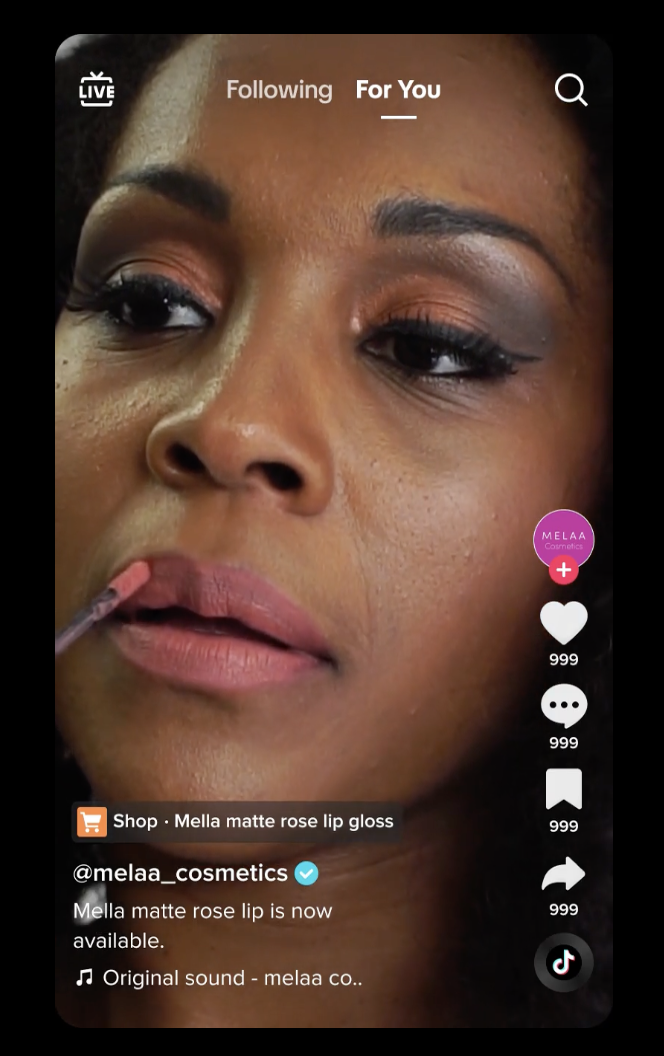
Live shopping has become transformative for many brands, with 50% of TikTok users having made a purchase after watching a TikTok Live. This shows the importance of exploring your social shopping options and defining the strategy that works the best for you.
There are four key options for brands to showcase and sell products on the app:
- Live shopping:
‘Lives’ are a great way for brands and creators to interact with users by demonstrating the products in real-time, whilst answering questions in the comments.
- Shoppable videos:
These in-feed videos appear as sponsored content when a user is scrolling through the app.
- Product showcase:
Brands can create a showcase of products the user is most likely to engage with in the app.
- Shop tab:
Just like a storefront, this feature enables users to scroll through products, content, and promotional campaigns.
According to the App Store and the Google Play Store, TikTok was the highest grossing app in 2023, and with more than 1.5 billion monthly active users it’s no surprise.
According to Hubspot, Instagram is the third most-trusted social shopping platform, but consumers say it has the second-best in-app shopping experience.
Instagram, alongside Pinterest, is one of the original visually led social platforms, and that means its users are expecting its sponsored content to achieve a certain level of either polish or personability. A study even indicated that 30% of shoppers now begin their shopping research and purchase journey on Instagram.
Instagram Shopping is split into various features to help customise your customer’s journey.
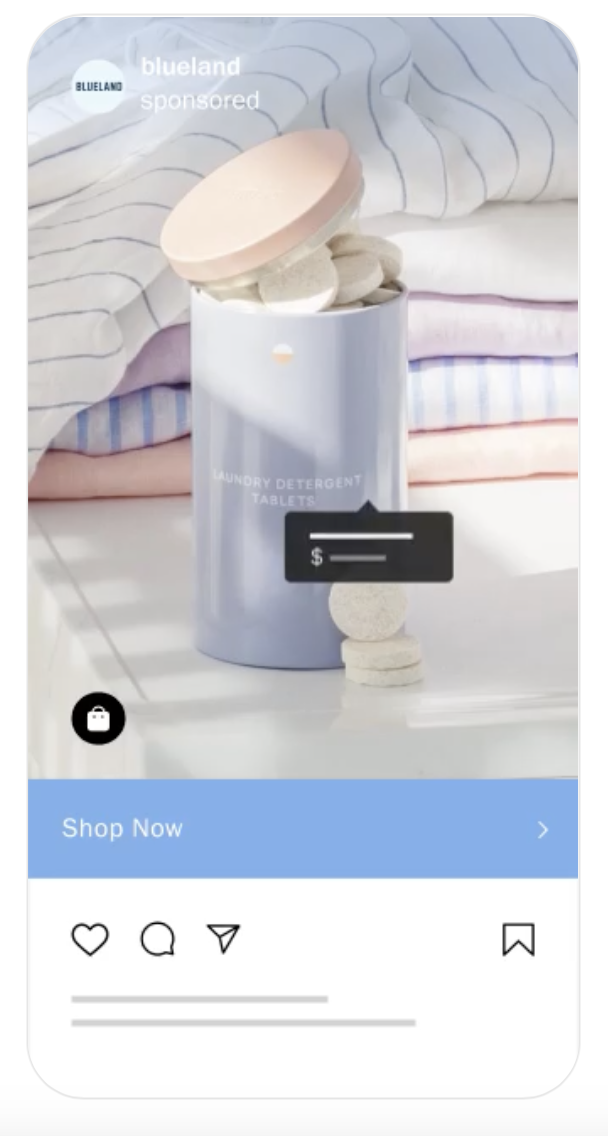
These include:
- Instagram Shop:
This is your main storefront and tells the story about your brand, directing users to engage with products.
- Collections:
This feature lets you make your shop customisable, categorising your products into various collections. This could include seasonal trends, room inspiration, recipes and much more.
- Product detail pages:
Similar to how your products would be displayed on your website, your product pages list relevant information, including prices and descriptions.
- Checkout in-app:
There’s no need for the customer to even leave the app when purchasing from your Instagram store. This feature enables customers the option to pay directly in the app.
Product tags in images and videos within the app, allows your customers to be directed to your Instagram store to find out more information, or browse for similar items. This can be set up in both organic content, as well as Ads Manager, with the inclusion of product tags.
Instagram has also recently launched ads that are available with promo codes as another option to entice users to click through.

Pinterest is the original visual mood board where users, brands and creators can come together to visualise whatever they like. There are so many topics users can actively choose to engage with, from beauty and interior design to fashion.
Sharing ideas and inspiration is what this platform is all about, and if you’re a visually led brand then this is the place you need to be.
According to Pinterest, when users find something they love, they’re willing to pay 40% more per month than on other social platforms – that’s almost double the price!
The platform also makes it incredibly easy to upload your products to get started on your advertising and selling journey.
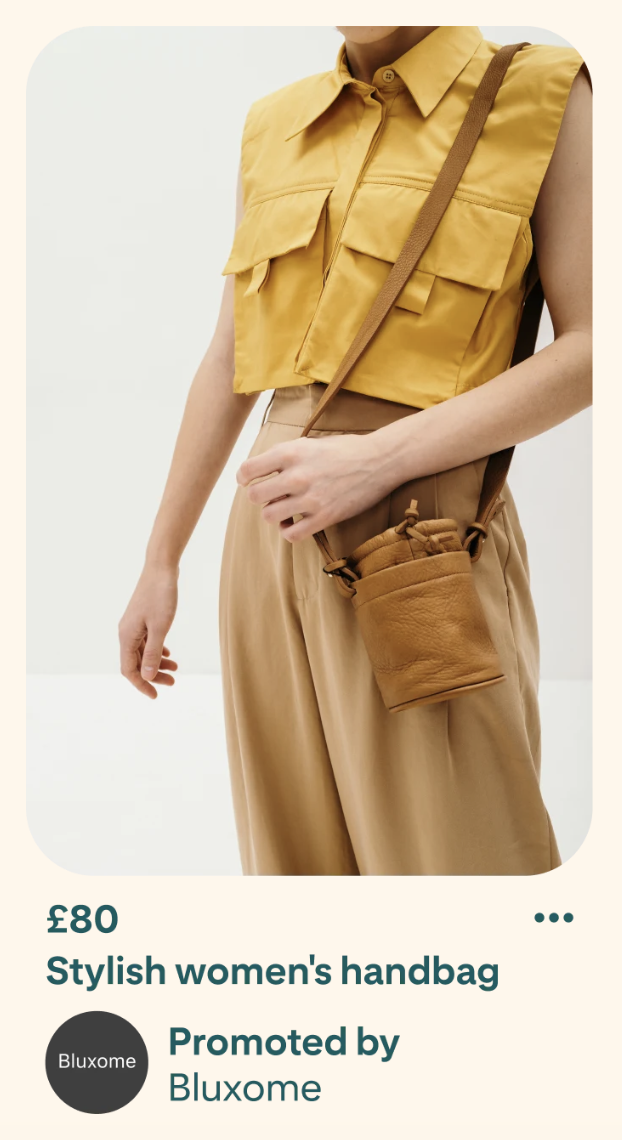
This can be done in three ways:
- Connecting to third party ecommerce platforms:
Pinterest already offers a number of integrations to various platforms, including Adobe Commerce, Salesforce Commerce Cloud, Shopify and Woo.
- Uploading via catalogues
- Utilising the shopping API
To achieve the best results and ROI, the platform has two main options for its adverts:
- Shopping ads:
These ads include extra details including prices, availability and reviews, and can be shown to customers most likely to take an action.
- Collection ads:
These ads incorporate slideshows and capabilities for users to shop for similar products.
According to Pinterest, advertisers who used both Catalogues and Shopping Ads saw a 15% increase in their return on ad spend.
Want to know more? Follow the tips in our blog on how to create the best Pinterest strategy for ecommerce.
Similar to Instagram, Meta has created a robust advertising platform for marketers to showcase their products to users on the Facebook app. And according to Hubspot, Facebook is the most trusted social shopping platform overall in 2023, so it makes sense to ensure you’re hitting your audience on this platform.
Again, the Facebook social commerce experience can be defined in two main ways of display:
- Facebook shop:
This is like a digital storefront where customers can explore the range of products available.
- Brand collections:
Build up the ranges and collections of the products you want to showcase.
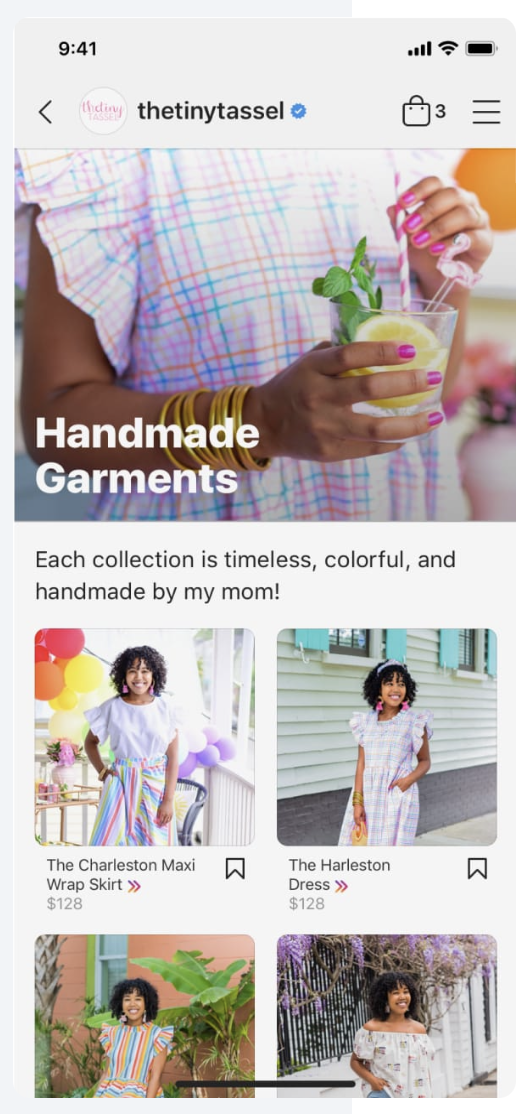
The best social commerce examples
We’ve explored the what, why and how – but who is doing it well?
Huda Beauty
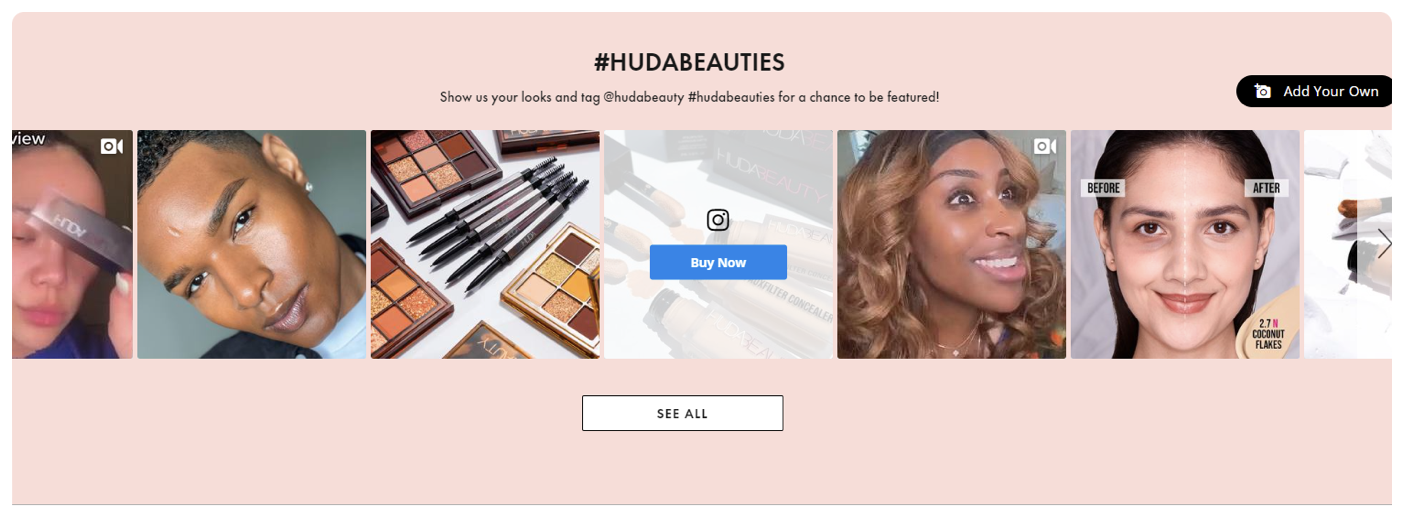
This heavy hitter in the global beauty space has their online presence down to a tee.
With more than 54 million followers on Instagram, nine million followers on TikTok and 46,000 followers on Pinterest, they have grown and fostered a community of loyal fans, as well as creators and influencers, who follow their every move.
As impressive as their organic presence is on socials, their paid activity is one to watch. They’re active across all platforms and their collaborations with creators on paid commissions are a match made in heaven.
If you ever need inspiration on how social commerce is done right, then look no further than Huda Beauty.
IKEA

The Swedish home retail brand dominates the advertising space, from billboards to TV ads and social highlights, the brand knows exactly how to appeal to their target demographic.
The IKEA UK social channels have more than 1.2 million followers on Instagram, 46,000 followers on TikTok and 742,000 followers on Pinterest.
They utilise their professional photography and appealing interior setups to encourage users to engage with their content and click through to their product tags.
With a dash of humour along the way, they’re an idealistic brand who have culminated a ‘must have’ aesthetic. Their aim is to take their customer on a journey throughout their lifetime and this has been brought to life through their social commerce strategy.
Sephora

Sephora is a front runner in knowing the key ingredients to a successful marketing campaign – placing your customer at the heart of everything you do.
The content they produce is always customer-centric, taking their audience on the journey with them rather than focusing on a hard sell. Their interactive quizzes give the personalised touch, and their request for user-generated content using bespoke hashtags such as #sephorauk is so simple but yet a total stroke of genius.
They utilise paid activity through creator collaborations, paid commissions, product tagging and so much more.
Top tips: How to create a social commerce strategy
- Research your audience:
Get to know your audience and their behaviours before making any strategic decisions.
This can be done by utilising a listening tool or exploring brand mentions to see how your target audience are interacting with you and your competitors online. This is a key step in defining your audience demographics which will enable you to make strategic decisions on the best channels, ads, content, and targeting for your brand. - Decide on your chosen social channels:
Your ecommerce strategy won’t necessarily work across all social channels, because it all depends on where your audience is. There’s no point wasting valuable content on a platform that won’t deliver your anticipated results.
The research you’ve done around your audience should help you shape this decision but further insights into the key demographics, drilling down into who is using which channel is important to consider. Each social platform will have their own general stats, but you can also find your own channels unique analytics in each app. - Set up your preferred social shopping experience platform:
You will need to decide which shopping experiences you will be opting for now that you have nailed down your audience and chosen social channel/s. - Creator collaborations:
This is a decision you will need to make as part of this process. Will you be working with influencers to promote your products through paid commissions, tags or live shopping experiences?
Creators can be a great way of reaching a whole new audience, but make sure you always do your due diligence and legal admin before deciding to work with any external party. Ensure their ethos and followers tie in directly with how you are positioning your brand. If you’re happy with the fit, then this could be a boost to your productivity and end results. - Set up your storefront and collections:
There’s no point doing all this leg work and perfecting your social commerce strategy if your storefront on the selected social channels isn’t fully calibrated and optimised. Make sure you follow the step-by-step instructions on each social platform to ensure it’s displaying how you’d expect it to.
Any content you create, or content that may be created by paid collaborators or regular customers, will need to link back to your storefront in order to encourage sales. Make sure you test this regularly too! - Customer service and user engagement:
As part of this process, engaging with comments on your content, no matter what the sentiment, will help you nurture a warm and inviting atmosphere.
The same goes for any messages directly to the inbox. Ensure you have a plan in place to reply to these in ample time and solutions are ready for whatever the query. - Checkout for success:
The main aim of creating these social storefronts is so your customer can check out seamlessly without leaving the app, so ensuring they can purchase items directly in the app without any hiccups is crucial. - Review using analytics – adapting your strategy as needed:
Regularly check on your social commerce performance to see if any updates or changes need to be made.
Remember, the audience demographics you researched may have shifted, so it’s always worth refreshing your research periodically and learning from the results you’ve achieved so far.
Summary
Social commerce is without a doubt the hottest trend right now, especially if your audience is Gen Z’s and Millennials.
According to a recent HubSpot survey, 87% of social media marketers think consumers will search for brands on social media more often than through search engines in 2024, and a whopping 58% are predicted to be between the ages of 18-34.
If you’re an ecommerce brand, you need to ensure your social shopping experience is as thorough and rigorous as your SEO strategy.
There’s no better time to refresh your marketing strategy and ensure you’re keeping up to date with the latest social advancements and utilising these to connect with your audience at every stage of the conversion funnel.
Our team is always here to help with your social commerce strategy or if you’re looking for tips on your current social media strategy – in fact, we’d love to hear from you! Get in touch using the form below.








